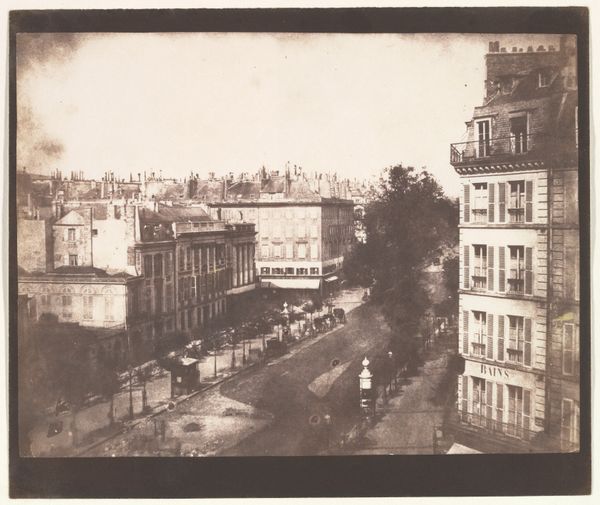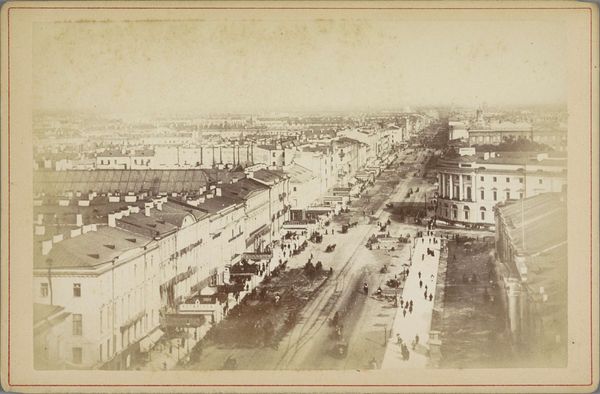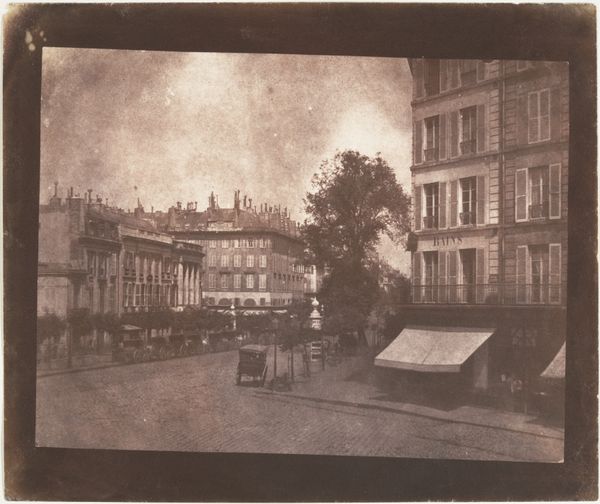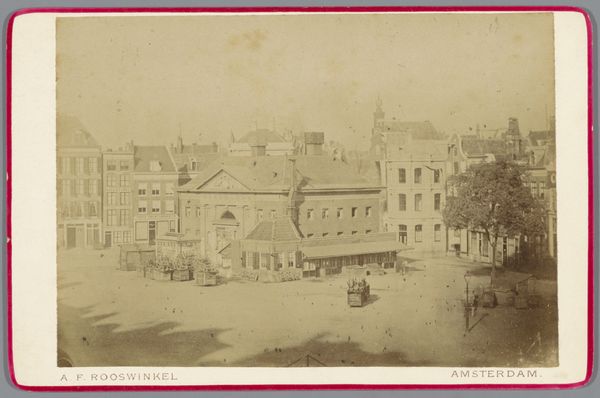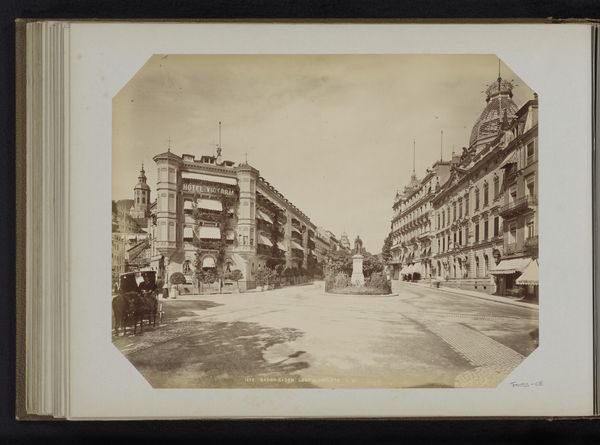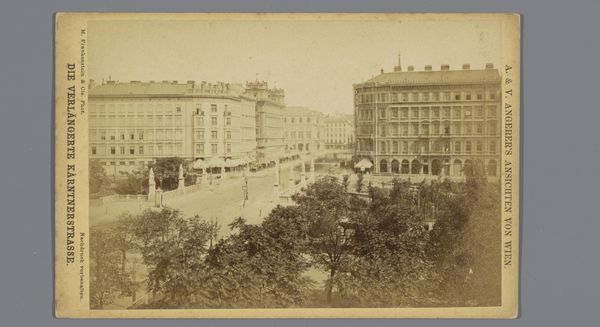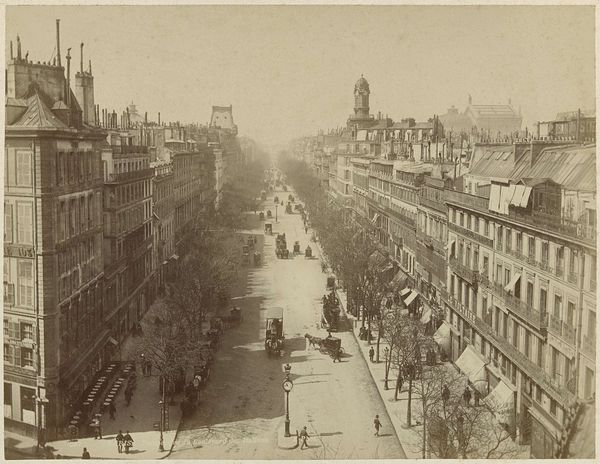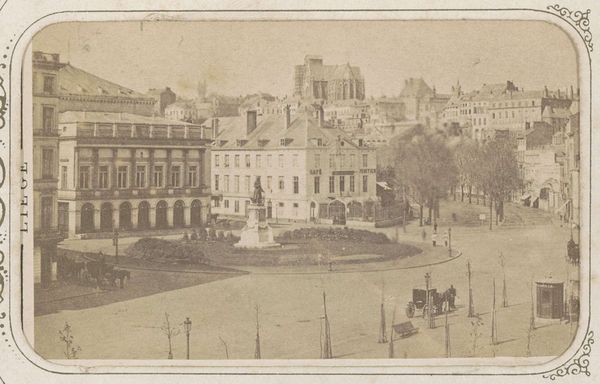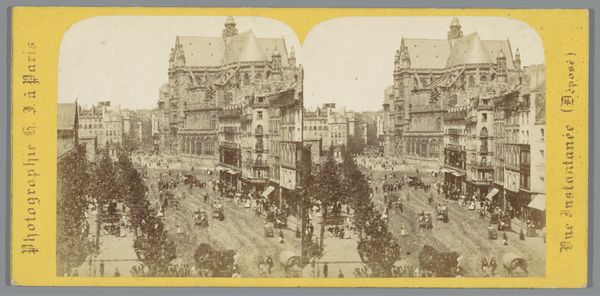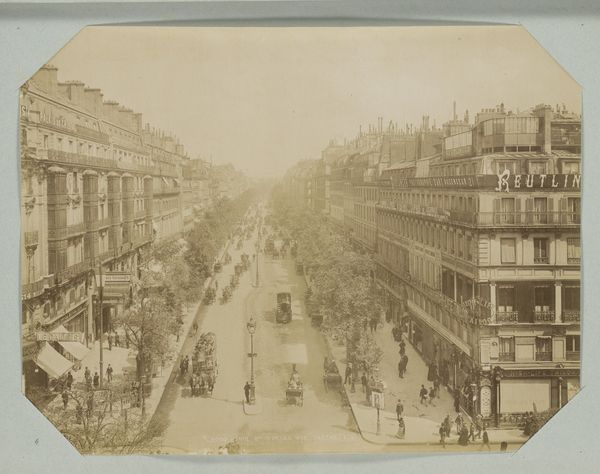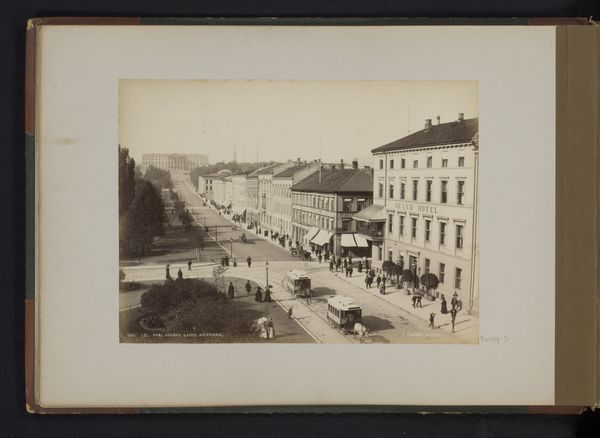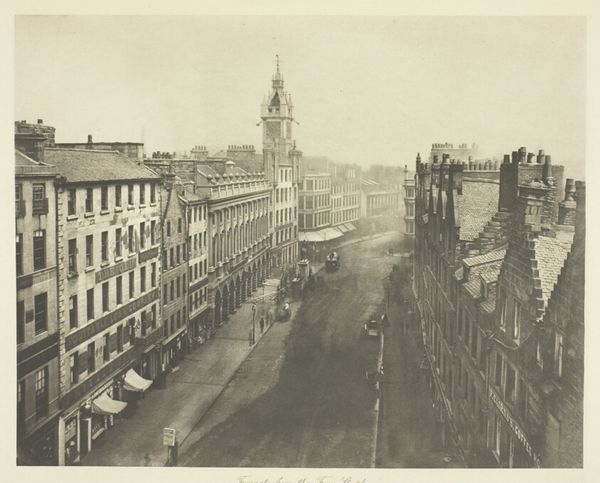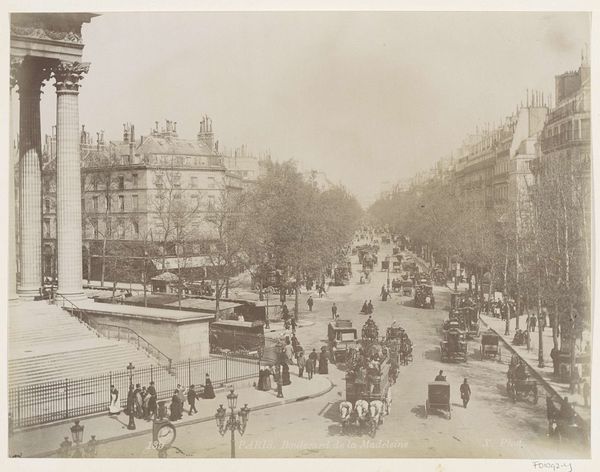
daguerreotype, photography
#
daguerreotype
#
photography
#
romanticism
#
cityscape
Copyright: Public Domain
Editor: This is "View of the Boulevards at Paris" by William Henry Fox Talbot, taken between 1843 and 1844, a daguerreotype photograph. It has a dreamy, almost ethereal quality, but also feels very precise. What story do you think it tells about Paris? Curator: It's tempting to romanticize this early photograph as purely nostalgic, but I think it reveals more about the intersection of class and visibility in a rapidly modernizing city. Consider that daguerreotypes, while groundbreaking, required long exposure times. This effectively erased the working class from the image – the street sweepers, vendors, and everyday laborers who populated the boulevards would be blurs, ghosts in the machine. What we are left with is architecture, bourgeois life, the stillness of a specific societal tier. Editor: So, the photograph inadvertently, or perhaps advertently, creates a specific narrative through its technical limitations? It chooses who gets to be seen? Curator: Precisely. And this aligns with the broader historical context. The Parisian boulevards were, in a way, intentionally designed to control the populace, allowing for easier troop movement and suppressing potential uprisings. Photography, like urban planning, became another tool that dictated who and what would be represented. How does knowing that affect your initial impression? Editor: It definitely complicates it. It's no longer just a pretty cityscape; it’s a document of social engineering, intentionally or not. Curator: Indeed. And in considering the evolution of photography, we see how accessibility shifted, challenging those power dynamics, offering space and agency to the marginalized, and transforming what a 'view' really means. Editor: I never would have looked at it that way without your insight! It’s so much richer when you consider the social implications of image-making itself. Curator: It's a reminder that even the most seemingly objective images are shaped by cultural, political, and technological forces, isn't it?
Comments
No comments
Be the first to comment and join the conversation on the ultimate creative platform.
